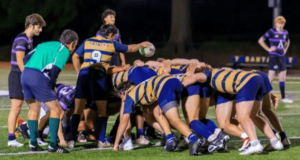Nick Cimillo ’26
Staff Writer
Walt Disney Animation Studios, widely regarded as the pinnacle of animated storytelling, has been losing its magic. During the pandemic, original animated films, such as “Luca” and “Encanto,” missed out on full-length theatrical releases, being distributed directly to streaming on Disney+. Without the box office revenue, these films could not break even. And in the case of theatrical animated releases, the ones that made the most money were sequels, with both “Frozen II” and “Toy Story 4” exceeding $1 billion. Combined with their incessant influx of live-action remakes that dominate the box office, Disney has their new strategy for success: cashing in on previous successes. The king of the original animation is faltering, and their competition is rising to claim the throne.
The release of 2018’s “Spider-Man: Into the Spider-Verse” changed everything. It dazzled viewers with a unique animation style reminiscent of comic books, blending elements of computer-generated 3D and hand-drawn 2D animation. It tells a triumphant, empowering story about rising to meet great expectations from the perspective of an Afro-Latino Spider-Man. It saw outstanding commercial and critical success by virtue of being a Spider-Man film, one that fans and critics consistently rank above the live-action films starring Tobey Maguire, Andrew Garfield and Tom Holland. Additionally, it won the Academy Award for Best Animated Picture in 2018, ending a six-year streak of wins by Disney and Pixar.
In the wake of Sony Pictures Animation’s unprecedented success with “Into the Spider-Verse,” other major animation studios have followed suit with their own unique animated projects, such as Dreamworks’ “Puss in Boots: The Last Wish” (2022) and Nickelodeon’s “Teenage Mutant Ninja Turtles: Mutant Mayhem” (2023). Common among these films are unique animation styles; “The Last Wish,” for instance, is often described as resembling a moving watercolor painting. With advances in computer-generated animation reaching new heights every passing year, the animated films deemed the “best-looking” are those that look the most realistic. Having abandoned 2D animation, recent Disney films have started to blend into one another stylistically, embracing realistic landscapes and lighting. But what this new wave of animated films shows is that animation thrives on what is distinctly non-realistic, allowing room for artistic expression.
Also, what is distinctly “non-Disney” about this animation renaissance is the subject matter of these films. Compared to Disney’s brand of child-friendliness, these new films are considered more mature and layered in their storytelling. No one could have guessed that Puss in Boot’s character arc in “The Last Wish” would involve coming to terms with his mortality by facing an embodiment of death or that the film would feature a realistic depiction of a panic attack. But these were welcome changes, proving that animated films can appeal just as much, if not more, to older audiences than children.
The success of this new animation landscape proves something that animation fans have been vocalizing for years: Animation is a medium, not a genre. Animation as an art form, being unbound by realism and the laws of physics, allows creators to tell a multitude of stories in a myriad of ways, stories that don’t appeal solely to kids by virtue of being animated.





+ There are no comments
Add yours